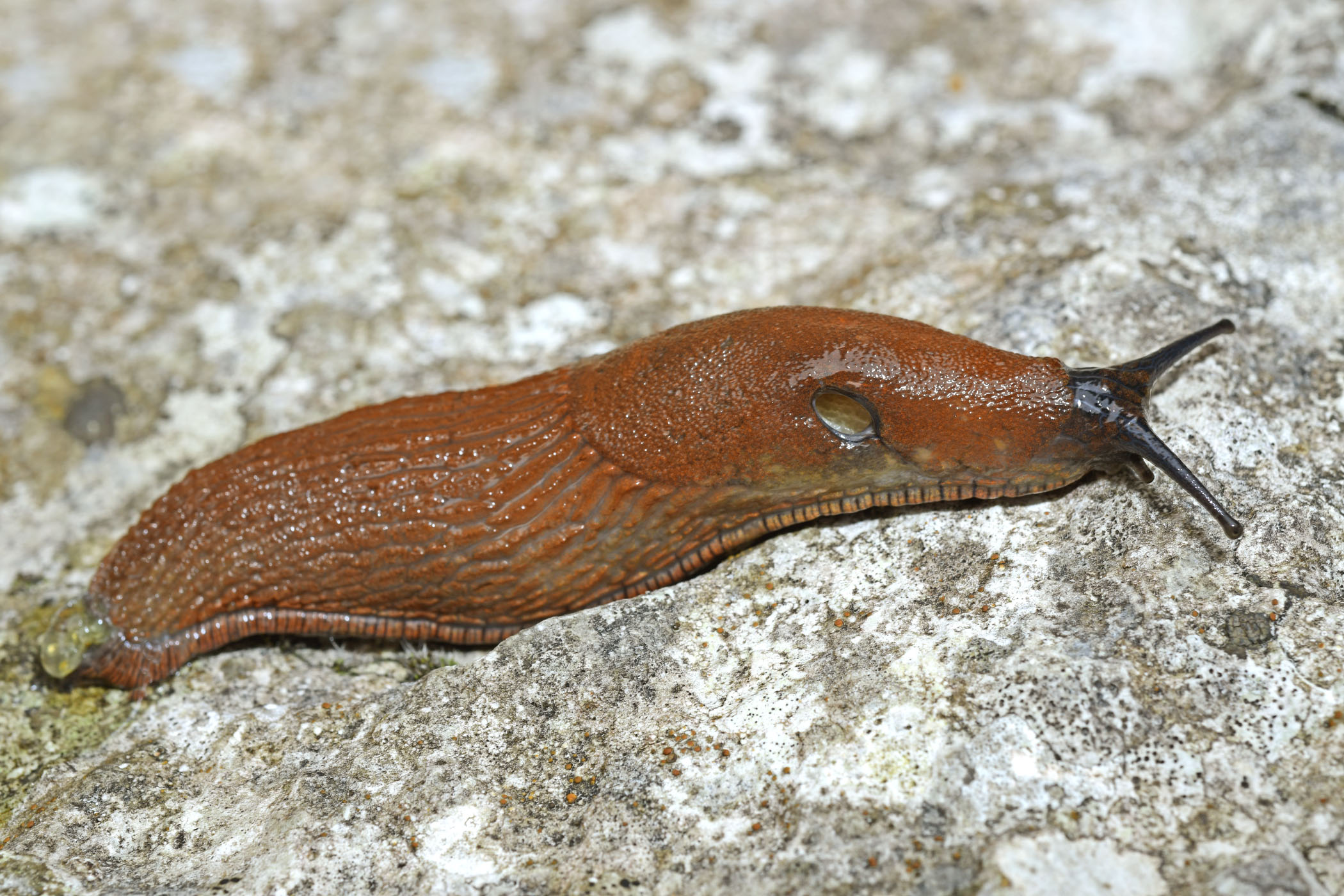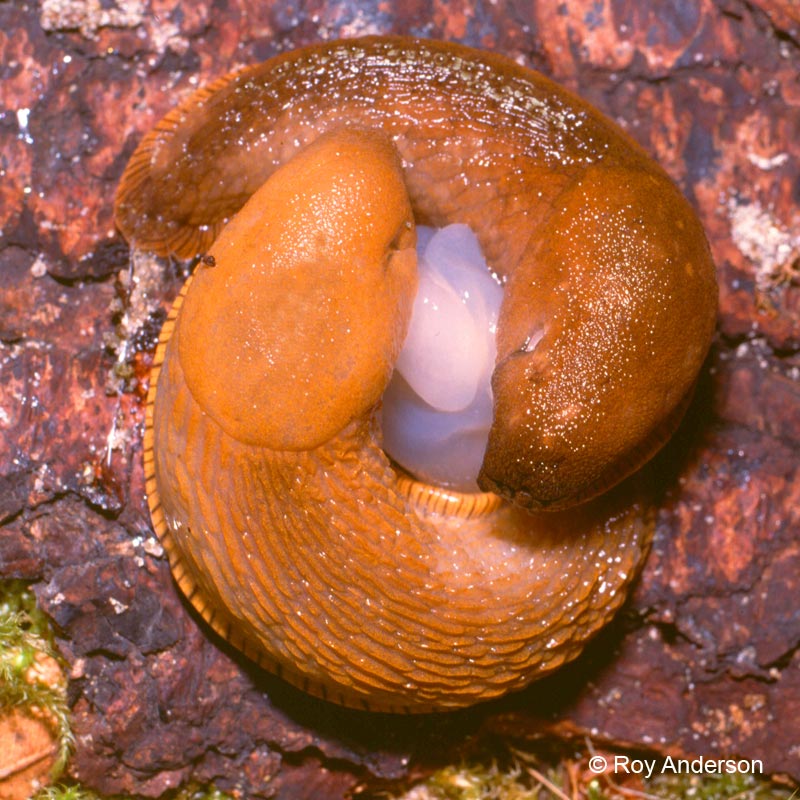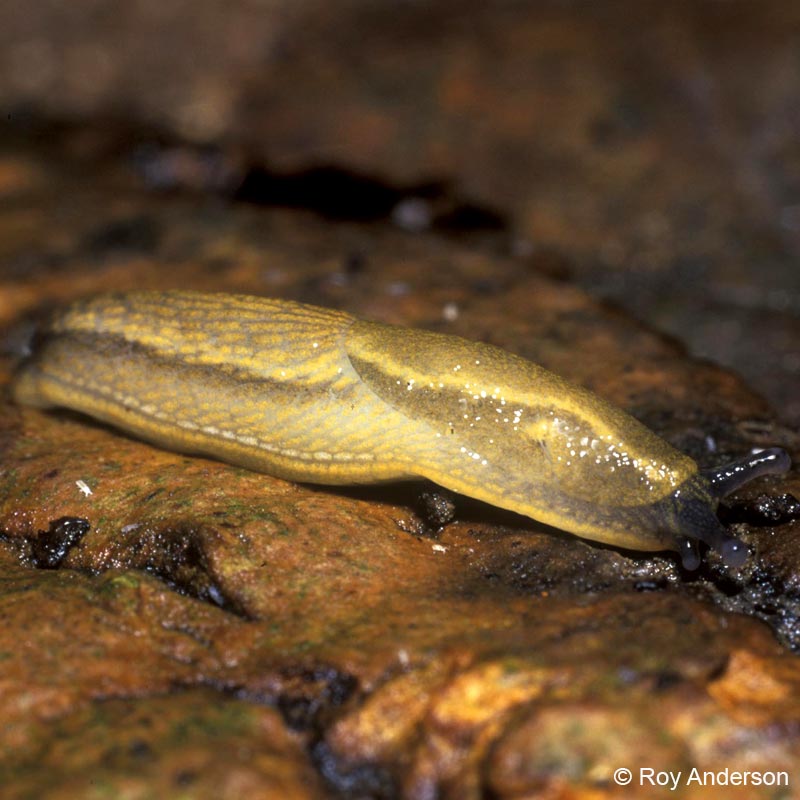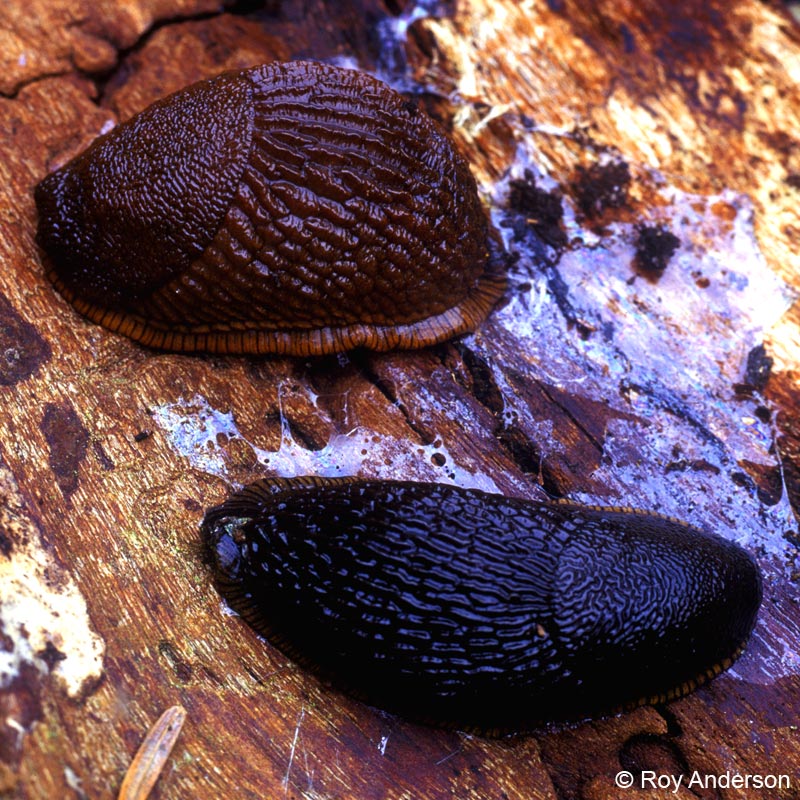| Mollusca : Gastropoda : Stylommatophora : Arionidae | Snails and slugs |
Arion vulgaris Moquin-Tandon, 1855
False Lusitanian slug
 |
| Arion vulgaris |
Description: Mature animals resemble a pale tan to dark brown or black version of Arion ater or of A. rufus but are incapable of the rocking response and often have a dark sole which contrasts strongly with a pale or reddish upper surface. Juveniles are banded and similar to those of Arion rufus . Reproduces sexually so pairs found copulating should be examined carefully. A major pest in Europe but stll rare in Ireland. 100-140 mm.
World Distribution: The natural range of what is here termed Arion vulgaris (lusitanicus auct. non Mabille) is difficult to determine. It has been widely spread by human activities and occurs over much of north-west Europe, often as an agricultural pest. There is now no doubt that the name under which it was formerly known, lusitanicus Mabille 1868, was misapplied, and that the true lusitanicus is a distinct north Portuguese endemic (Castillejo, 1997).
Irish Distribution: In Britain and Ireland this is an introduction, possibly of relatively recent date and still local, being known mainly from the south and west of Britain (Kerney, 1999). In Ireland there are a handful of confirmed records from disturbed sites around Belfast, Dublin and Antrim.
Ecology:
- Garden faunas are not well known in Ireland but provide the most likely habitat for vulgaris
- Otherwise, in dryish, warm waste places
- A common pest of European horticulture and agriculture
Key Identification Features:
- A large roundback slug with two prevailing colour forms: tan or brown above with a pale sole; red-brown to black above with a dark grey to black sole
- Foot fringe dull yellowish to reddish or brown, little contrasting with the upper body colour
- Young have dark lateral bands edged above with a lighter colour (see Arion rufus)
- Rocking response absent
- Mucus colourless or pale orange
- Reproduces sexually: look out for copulating individuals in July/August
Taxonomy:
- Formerly known as Arion lusitanicus Mabille. A recent re-description of lusitanicus sensu Mabille, based on topotypes from its type locality at Setúbal, Serra da Arrábida, Portugal (Castillejo, 1997) has shown that Portuguese lusitanicus has a very different spermatophore and internal morphology from the present species.
- Falkner et al. (2002) have proposed that the north-west European species be called vulgaris Moquin-Tandon, 1855 as the first available name which can be unambiguously applied.
- British authors including Quick (1960) confused vulgaris with Arion flagellus Collinge. Some of Quick's drawings of 'lusitanicus', particularly of the spermatophore actually relate to flagellus.
- The reader is directed to Davies' (1987) paper which first resolved the confusion here and gives a very detailed account of the distinguishing features and reproductive biology of both species.
Red list status:
- Not applicable.
Distribution Map from NBN: Arion vulgaris at National Biodiversity Network mapping facility, data for UK.
iNaturalist: Arion vulgaris at iNaturalist World Species Observations database.
GBIF data for Arion vulgaris | Classification: Gastropoda, Stylommatophora, Arionidae, Arion
Thumbnails for genus Arion
| Anderson, R., 2025. Arion vulgaris. Moquin-Tandon, 1855. [In] MolluscIreland. https://www2.habitas.org.uk/molluscireland/species.php?item=24. Accessed on 2025-04-02. |




